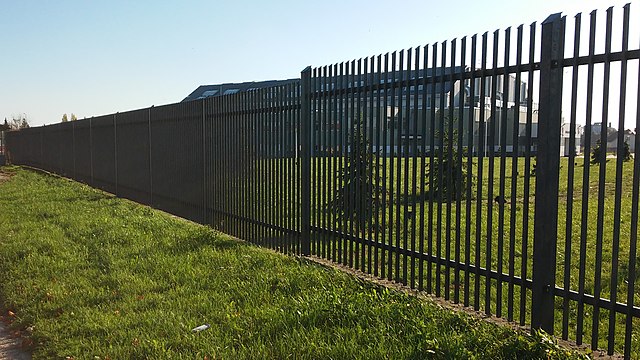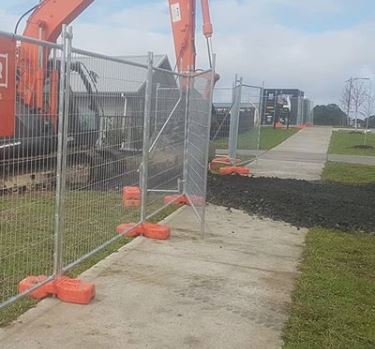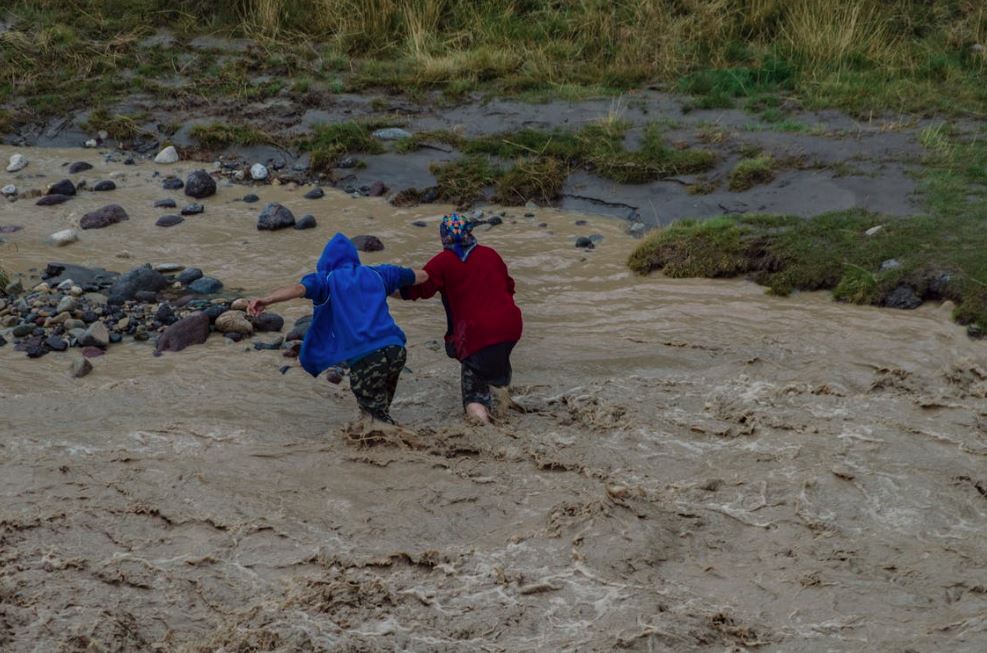
Soil erosion is a natural process that occurs when the bare soil disperses from the earth by wind or water. Soil erosion refers to a specific type of soil degradation, one that can take place on virtually any kind of land.
There are all types of erosion, each of which can cause significant damage to the environment. In this article, we will discuss some of the most common types of soil erosion: water erosion, wind erosion, and mass wasting.
What is Soil Erosion and What Causes it?
The removal of the top fertile layer of the soil from land is called soil erosion. Soil erosion, or soil loss, will occur at different rates of speed depending on soil structure, texture, and the presence of growing vegetation and organic matter. The top fertile layer of soil is primarily removed from the earth’s surface by wind or water. It’s important to understand the different types of soil erosion and the conditions in which it happens so that measures can be taken to prevent and mitigate it. There are several types of soil erosion, each of which can cause significant damage to the environment.
Wind Erosion
The process by which wind removes soil from the earth’s surface is called wind erosion. This type of erosion can be caused by strong winds, such as those that occur during a dust storm. Wind erosion can cause damage to crops, homes, and other structures, as well as create dust storms that can be harmful to people. This is a great article about What is Soil Stabilization in Road Construction.
Water Erosion
Water erosion is the most common type of erosion, and it occurs when water flow carries soil away from the earth’s surface. This type of erosion can be caused by rainfall, snowmelt, or river flooding. Water erosion can be very damaging to the environment, as it can wash away fertile soil, clog rivers and streams with sediment, and damage property. It is crucial to implement measures to reduce soil erosion caused by water to ensure the health of crops and nearby ecosystems.
Some of the common types of water erosion are listed below.
Floodplain Erosion
Floodplain erosion is a type of erosion that occurs when a river or stream overflows its banks and carries away the soil surface and other materials from the floodplain. The floodplain is the area of land adjacent to a river or stream that is regularly flooded. Floodplain erosion can cause significant damage to the environment, including the loss of valuable farmland and the destruction of homes and other structures.
Stream Bank Erosion
Bank erosion is a type of erosion that occurs when water damages the banks of a river or stream. The water can erode the soil and rocks on the river banks and steep slopes, which can lead to the collapse of the bank. This can damage nearby homes and businesses, as well as disrupt transportation routes.
Bank erosion can also cause flooding, as the collapsed bank into the stream bed can block the flow of water, leading to floodplain erosion described above. This can cause the accumulation of water in an area, which can damage property and lead to the spread of diseases.
Gravity Erosion
Gravity erosion occurs when gravity pulls soil and other materials down a slope or hill. This type of erosion can be hazardous, as it can cause landslides and mudslides. Gravity erosion is often exacerbated by rainfall or surface runoff, which can make the soil even more unstable. Additionally, gravity erosion can lead to significant soil loss, diminishing topsoil and negatively impacting crop production, water quality, and the environment.
Gully Erosion
Gully erosion is a type of erosion that occurs when water flows over the soil surface in concentrated gully erosion channels called drainage lines. The water can erode the soil away, forming deep channels that can be several feet wide and several feet deep.
Gully erosion is highly visible and affects soil productivity, restricts land use, and can damage roads, fences, and buildings. Gully erosion can cause significant damage to the environment, including the destruction of crops, the loss of topsoil, and the pollution of waterways.
Mass Wasting
Mass wasting, also known as a landslide, mass movement, or slope failure, is the rapid movement of earth and rock down steep slopes, a hill, or mountainside. Often the large scale result of gravity erosion mentioned above, this type of erosion can be caused by a number of factors, such as rain, snow, earthquakes, or volcanic activity. Mass wasting can cause significant damage to both people and property, and often results in the loss of life.
Overgrazing
Overgrazing is also a cause of soil erosion. Overgrazing reduces the usefulness and productivity of the soil structure. The livestock remove too much of the biomass on the land and the land managers do not allow enough time for the pasture plants to recover before they are grazed again. This reduces the amount of living plants and living roots in the soil and lowers the biodiversity of plants in the pasture.
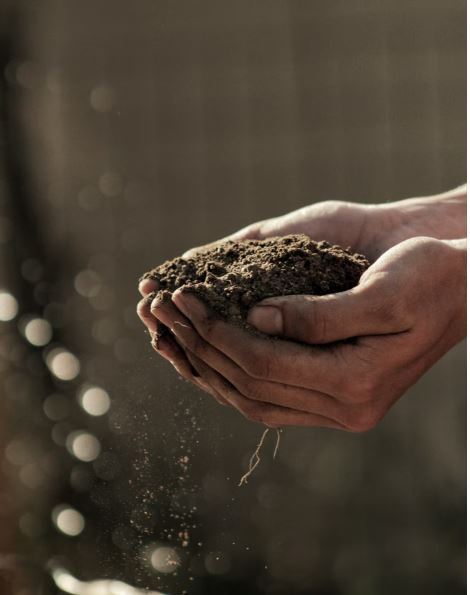
When overgrazing occurs, the soil structure becomes compacted and water infiltration rates decrease causing flooding and run off. The exposed soil left behind results in fine particles like dust which can be carried easily by wind and water. Reduced topsoil depth, soil organic matter, and soil fertility affect the land’s quality and agricultural productivity.
Rill Erosion
Rill erosion is caused by water flowing over the surface of the soil. This can happen during a heavy rainstorm, or when irrigation water is not properly controlled.
Rills caused by rill erosion are usually small, but they can become larger and deeper over time. If left unchecked, rill erosion can eventually lead to gully erosion (described above).
Sheet Erosion
Sheet erosion is one of the least apparent forms of erosion and can occur undetected. Sheet erosion occurs when water flows over the surface of the soil in a more diffuse manner, causing the eroded soil to be removed in a sheet-like fashion.
This can happen during heavy rains or when there is excessive irrigation. Sheet erosion can cause the loss of topsoil, which is the thin layer of soil that is most fertile and contains the most organic matter. This can lead to the degradation of agricultural land and the loss of productivity.
Splash Erosion
Splash erosion is one of the most common forms of soil erosion. It occurs when raindrops hit the ground, causing small particles of soil to be splashed up into the air. These particles can then be blown away by the wind, or carried away by runoff water. Splash erosion is a major problem in areas that have a lot of rainfall, or where there is little vegetation to protect the soil.
Surface Water Runoff and Rainfall Erosion
Soil erosion can be caused by many different factors, but two of the most common are surface runoff and rainfall.
Surface runoff is the process by which water flows over the surface of the earth, often carrying soil and other pollutants with it. This type of erosion can quickly wash away valuable soil and pollute waterways.
Runoff caused by rainfall can erode the soil in several ways, including by washing away loose particles, compacting exposed soil so that pore spaces are removed and plants roots struggle to penetrate deeply, and causing flooding which can wash away large amounts of soil.
Raindrops can both destroy soil aggregates and transport soil small distances. Maintaining vegetative cover and increasing with organic matter can act as a glue for rainfall, stabilizing pore spaces that can absorb water and reduce the proliferation of ponded water that carries away fertile topsoil. It is crucial to implement measures to reduce soil erosion caused by surface water runoff and rainfall.
Tunnel Erosion
Tunnel erosion is a type of water erosion that occurs when a stream or river flows through a narrow, steep-sided channel. The fast-moving water can quickly erode the sides of the channel, and can also cause the river to flow over its banks, flooding surrounding areas. This is similar to stream bank and floodplain erosion. Tunnel erosion can be very destructive, and can lead to the loss of valuable farmland and property.
How Does Soil Erosion Damage the Environment?
Soil erosion and soil loss can have a number of negative impacts on the environment. It can cause the loss of topsoil, which is the layer of soil that is most fertile and contains the most organic matter. This can lead to the degradation of agricultural land and the loss of productivity. Soil erosion can also clog rivers and streams with sediment, damage property, and create dust storms that can be harmful to people.
What Are Some Ways to Prevent or Mitigate Soil Erosion?
There are several ways to prevent or mitigate soil erosion. The best way to control water erosion involves slowing down the flow of water and limiting soil detachment. Here are some effective solutions to erosion and examples of erosion control strategies. Measures to reduce soil erosion are crucial for maintaining the health of crops and nearby ecosystems.
- Install silt fence, build retaining walls or drainage systems to divert the flow of water.
- Plant vegetation that will help stabilize the soil. Trees and other plants can help trap loose soil particles and reduce the amount of water that flows over the surface. They can also help shade the soil from the sun, which can slow down the rate of evaporation.
- Mulching is another effective method of preventing soil erosion. Mulch is a layer of material, such as wood chips or straw, that is spread over the surface of the soil. Mulch can help protect the soil from wind and water erosion, and can also help it retain moisture.
- Tillage is important in conventional agriculture as it provides maximum nutrient release for growing plants but tilling has been found to be very destructive to soil structure and the soil food web. Repeated use of tilling on land contributes to compaction and erosion. Consider transitioning to no-till regenerative farming. If tilling is continued, there are several best management practices that can help reduce erosion. Using cover crops, filter strips, contour farming and conservation tillage, and riparian buffers can help reduce or eliminate soil movement. Minimum and no-till systems help with both wind and water types of erosion.
- Silt fence, erosion blankets and hydroseeding can be used on commercial properties and construction projects in New Jersey to help to keep soil in place providing soil stabilization and decreased soil erosion.
Erosion Control Measures For Agricultural Lands
Agricultural lands are especially prone to erosion, as the vast expanses of open land surface often suffer from wind and water-accelerated erosion. Fortunately, erosion control measures can be both effective and cost-efficient in helping protect these agricultural lands from further erosion. Cover crops are one such erosion control measure; when planted between harvests, cover crops can provide a physical barrier against splashing rain droplets that can erode soil structures. It is crucial to implement these measures to reduce soil erosion and ensure the health of crops and nearby ecosystems.
No-till farms can also reduce erosion; by minimizing ground disturbance due to plowing or harrowing and integrating vegetation into planting techniques, no-till farming techniques can help absorb the impact of raindrops and lessen erosion. Planting items such as living mulches and erosion blankets near waterways or hillsides can also help prevent erosion by acting as barriers against drainage movement causing sediment deposits downstream. By implementing these different erosion control measures on agricultural lands, we are able to greatly reduce erosion-related damage resulting in protective surroundings for our much-needed ecosystems.
Soil erosion negatively impacts on the environment and requires prevention and management
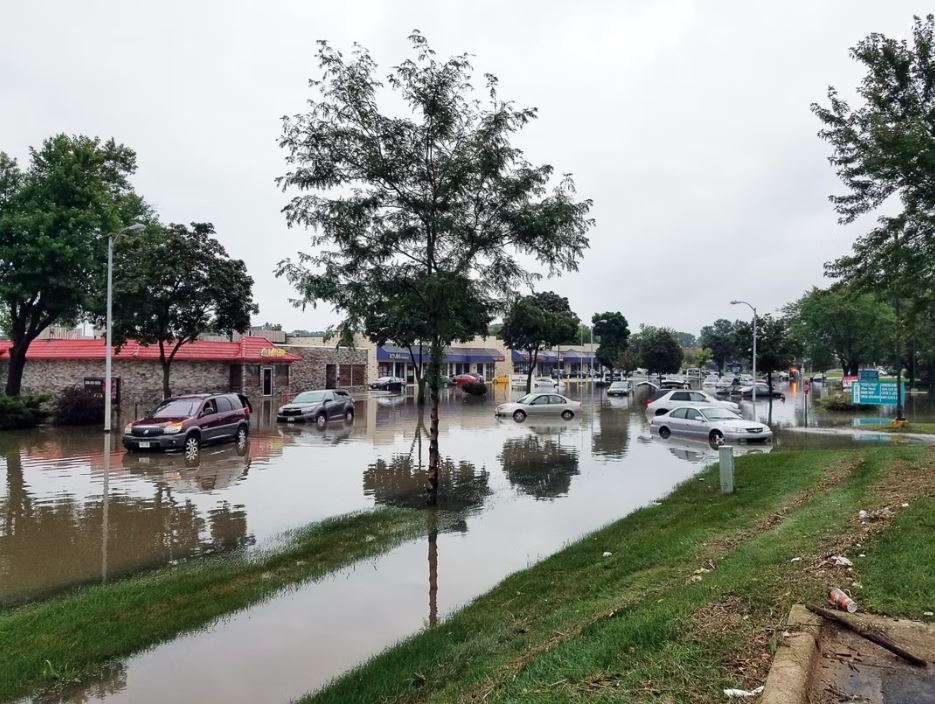
Soil erosion is a process that occurs when loose soil particles are removed from the earth’s surface by wind or water. There are several different forms of soil erosion, each of which can cause significant damage to the environment.
It is important to take action before the damage is done. If you are concerned about soil erosion in your area, there are things you can do to help.
You can contact your local government officials and let them know about your concerns. You can also join a community group or organization that is working to combat soil erosion. Finally, you can spread the word about the importance of preventing soil erosion, and encourage others to take action in their own communities.
Frequently Asked Questions
Q: What is soil erosion?
A: Soil erosion is the process by which wind or water removes soil from the earth’s surface.
Q: What are some of the impacts of soil erosion?
A: Soil erosion can cause the loss of topsoil, degradation of agricultural land by reducing crop production, clogging of rivers and streams, damage to property, and dust storms.
Q: What are some ways to prevent or mitigate soil erosion?
Some ways to prevent or mitigate soil erosion include building retaining walls or drainage systems, planting vegetation, mulching, and spreading awareness about the issue.
It is crucial to implement these measures to reduce soil erosion and ensure the health of crops and nearby ecosystems.
Q: How can I help prevent soil erosion in my community?
A: You can help prevent soil erosion in your community by contacting your local government officials, joining a community group or organization, and spreading awareness
Q: What are erosion control blankets?
A: Erosion control blankets are sheets of material that are used to stabilize the soil and prevent erosion. They are often made of biodegradable materials, such as straw or wood chips.
Q: What is hydroseeding?
A: Hydroseeding is a method of planting vegetation using a mixture of water, seed, and mulch. This method is often used to prevent soil erosion on slopes.

